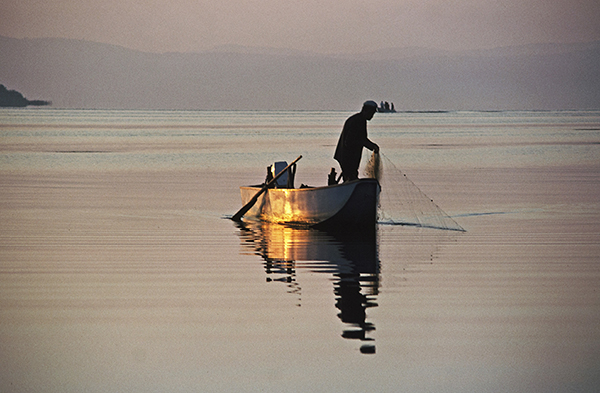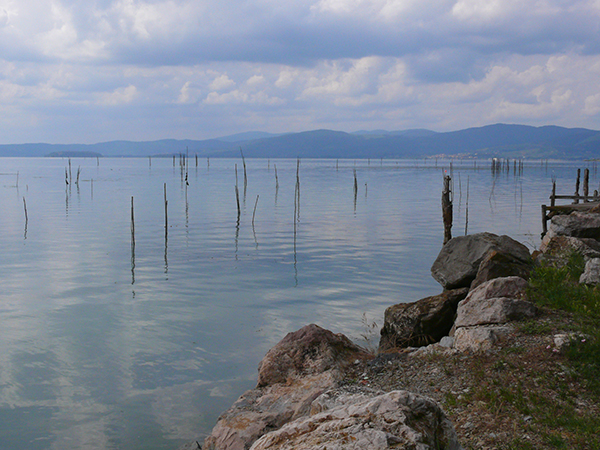ITALY, EUROPE
Lake Trasimeno
Lake Trasimeno is the fourth largest lake in Italy, with a surface area of 126 km². Located in Umbria, north-west of Perugia, the lake is shallow, with a maximum depth of 6 m, and lies at an elevation of 257 m above sea level. It is fed exclusively by rainwater due to the lack of natural inflows and outflows, and receives an average of 723 mm of precipitation per year.
The sparsely populated coastline is characterized by reed beds, water lilies and holm oak woods. Traditional agriculture includes crops such as wheat, maize and tobacco, on the three islands, people grow olives. Around the lake, the macrophytes flora is particularly remarkable, with an abundance of marsh plants such as white water lilies, marsh bedstraw, marsh iris, floating fern, small pondweed and common club-rush.
Protection status
· Nature Park - Parco del Lago Trasimeno
· Special Areas of Conservation (Habitats Directive)
· Special Protection Area (Birds Directive)

Biodiversity
The abundance of fish is an important source of income for the lake’s inhabitants. Fish species include Tench, Eel, Carp, Pike and Perch. Rare amphibians such as the Crested Newt and reptiles such as the Dice Snake live in and around Lake Trasimeno.
Many migratory birds rest at Lake Trasimeno. Among them are Squacco Heron, Purple Heron, Little Bittern, Kingfisher, Bittern, Wigeon, Mallard, Tufted Duck, Ferruginous Duck, Great Crested Grebe. Common birds of prey include the Short-toed Snake Eagle, Osprey and Eagle Owl.

Threats
In summer 2023, an analysis of Lake Trasimeno found that only one sample was found to be “heavily polluted”. However, the chemical-physical parameters indicate that Lake Trasimeno is suffering: high water temperatures, high conductivity values, low oxygen values, endanger the survival of all aquatic species present. Still there are problems related to purification or illegal discharges.
The Living Lakes partners from Legambiente Umbria, believe that the climatic situation risks increasing drought phenomena and therefore the Trasimeno water emergency. If the volume, reserve and amount of oxygen it can store is reduced, there is a risk in the near future of going into anoxia phenomena and fish die-off.

Our Work
Legambiente is the most widespread environmental organisation in Italy. It carries out numerous awareness-raising and information campaigns on environmental issues. It fights against environmental crime and promotes solidarity and peace. It works at local, national and European level to promote sustainable development, the green economy and adaptation to climate change.
Legambiente contributed to the implementation of the LIFE Blue Lakes project, which tackled the problem of microplastics in Lake Trasimeno and other lakes through a series of governance, training, information and awareness-raising actions aimed at institutions, relevant stakeholders and citizens.
Legambiente

Co-funded by the European Union. Views and opinions expressed are however those of the author(s) only and do not necessarily reflect those of the European Union or CINEA. Neither the European Union nor the granting authority can be held responsible for them.



